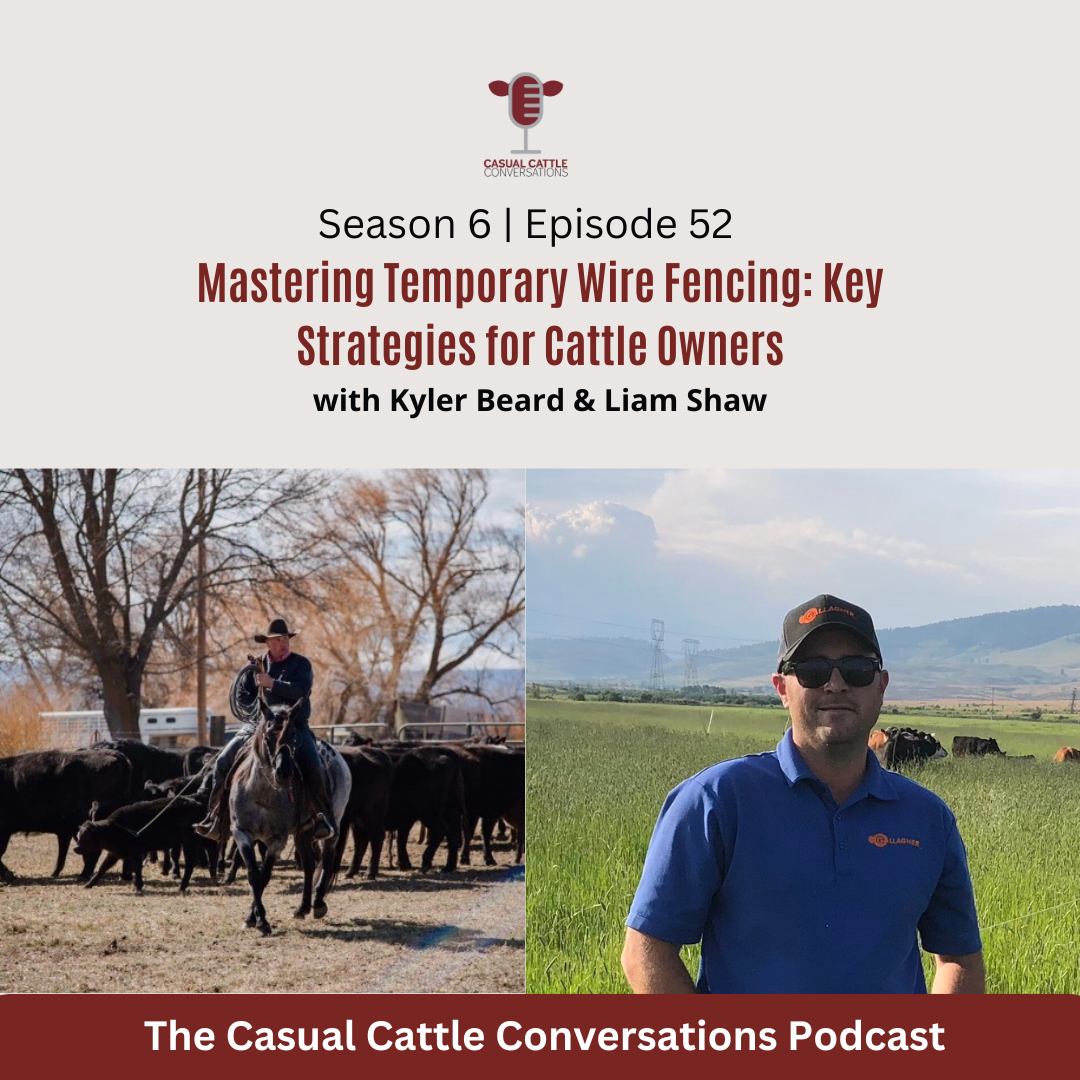Mastering Temporary Wire Fencing: Key Strategies for Cattle Owners

Question of the Week: What’s your biggest limiting factor?
Each cattle operation has a unique set of challenges and opportunities. What is your biggest limiting factor when it comes to improving your operation? Is it time, money, labor, natural resources or something else?

Mastering Temporary Wire Fencing: Key Strategies for Cattle Owners - Kyler Beard, Liam Shaw
Leasing pasture is common in the beef industry, especially for those just getting started. However, fencing leased pastures can be a challenge depending on the conditions of the existing fences.
Liam Shaw, cattle producer and sales representative for Gallagher electric fence, and Kyler Beard, rancher in Ellensburg, WA, joined Shaye Koester-Wanner for a conversation about how to effectively fence leased pastures and work with landowners to prevent wildfires with proper grazing.
Beard started grazing cattle in his late 20s and found opportunity by leasing ground that wasn’t being used for farmland. The main challenges he experiences in his area include urban sprawl, wildfire risk and predators. Beard uses intensive grazing principles to his advantage to work around these challenges and use cattle to improve the land in his area.
“The biggest difference I’ve seen over the years is the length of time I can graze a piece of land and the number of native plants that are coming back and improving the overall diversity,” said Beard.
There are two main types of ground that Beard grazes on, irrigated and dry rangeland. Each system is operated differently but he enjoys them both. Due to the climate naturally being more arid, Beard uses a hot ground system on his fences to keep calves where they belong and off major roadways.
“A hot ground system isn’t applicable in all systems, but in arid areas or areas with heavy snow and ice loads it is essential. This can be used with both temporary and permanent electric fences,” said Shaw.
It’s important to know your climate before putting in a ground system for your fences.
Beard’s pastures are as far as 40 minutes apart, so he must be strategic with his grazing plans each year and factor in the wishes of the landowners.
“Fire danger is one thing everyone is worried about. I can’t get to every piece of land fast enough to graze it off for fire prevention. So, last year I used single strand hot wire to graze off sections that act as buffers in the instance fire may occur,” said Beard.
This helped Beard not only reduce the risk of wildfires occurring and spreading but also allowed him to be courteous to the people he rents from.
While wildlife can pose a threat or be a nuisance to others, Beard doesn’t notice much of an impact. Both elk and wolves have been present in his paddocks and the only challenge he experiences is if an elk occasionally gets hooked on the fence and drags it out. As far as wolves go, he has a theory that because the cows are used to frequent moves with dogs, when they see a wolf, they grab their calves and bunch up naturally as opposed to running.
With as much electric fence as Beard puts up each year, he has a few favorite tools to make the process go smoother. The Gallagher geared reels, spring clips and turbowire are necessities to his operation because of their functionality and durability. Shaw shared that some common mistakes he sees cattle producers make when putting up electric fence can include using wire designed for cross-fences to create perimeter fences and not having the right sized energizer for the type and length of wire being used.
When it comes down to renting pastureland and rotational grazing, it’s about having the right tools and mindset. Investing in the right fencing supplies will save you thousands and make the process easier. They also create an opportunity to leave the land better than you found it.







